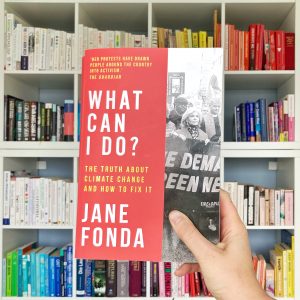marie kondo extends her brand beyond the decluttering of personal homes and teams up with scott sonenshein to tackle the workplace in joy at work.
if you think that it’s weird to talk about joy at work during a global pandemic, you’re right.
it is.
at the same time, what better time is there?
the workplace is changing as the lives of a majority of the global humanpower have been uprooted to some extent.
and with these changes come a whole new set of priorities, rules and ways of doing things.
or not doing.
so why not use this moment of unintentional recalibration to intentionnally take stock of where we are and where we want to go from here?
professionally speaking of course.
what is joy at work about?
this book was obviously written before the pandemic by bestselling authors marie kondo and scott sonenshein.
both weigh in on different aspects of the task at hand.
the premise of joy at work is familiar to konmari fans :
if it sparks joy, it stays. if it doesn’t, it’s clutter and has to go.
kondo tackles physical clutter and items in the workspace in the first part of the book whereas sonenshein deals with all things non-material in the second part : ie digital clutter, email, meetings, …
does it spark joy?
i’ll be honest : joy isn’t necessarily the first word that comes into my mind when i think about work.
i’m pretty sure, i’m not the alone one.
but having read and loved and applied most wisdom from two of kondo’s previous books, i had a lot of expectations for this book.
(if you couldn’t tell by now : i absolutely adore marie kondo).
i was mostly curious to see how she would translate her trademark ’spark joy’ philosophy into the workplace.
joy extended
and sure enough, while most of her chapters read like a summary of her previous work, she does introduce the new concepts of ‘functional joy’ and ‘future joy’.
functional joy and future joy
as these are the only really novel elements in kondo’s four chapters, i’ll leave the detailed explanation of what these term mean to her.
but suffice it say, that if you kept one or the other object during you house declutter not because it sparked joy but because you might need them now or in the future, you might already have a pretty good grasp of what they are about.
the morale of the story
as good as it felt to hear kondo’s ever positive and well-meaning voice, i’m very saddened to report that the content of her chapters fell a bit flat.
even though i appreciate the reminder of her genius principles of tidying, i’m not certain they warranted a separate book for the workplace.
which i guess is the ultimate reason she partnered up.
digital joy
on to the remaining seven chapters authored by sonenshein.
i haven’t read his previous book stretch yet, but
his credentials as an organizational psychologist seem solid and the science he quotes and references seems sound.
also, i liked the idea that kondo thought to extend her brand beyond the material to really respond to the reality of a modern workplace.
at first
however, upon reading sonenshein’s chapters, i felt uninspired at first.
i felt as if his instructions repeat themselves chapter after chapter.
as if he copy/pasted the chapters and simply used find/replace all to update the writing to the current chapter’s topic:
- imagine your ideal (insert topic of the chapter here)
- take stock of what you have
- keep what feels like (1), discard the rest.
but then
but then i realised that there was nothing wrong with sonenshein’s writing. what was wrong was, that i had read that same book before.
only better.
it’s called essentialism.
at the same time, i realised that unlike essentialism – which expects you to find and pursue your essential intent (something like an overarching purpose) – sonenshein’s instructions are way more accessible.
they are practical, evidence-based tips that will work for most people.
and at the end of the day, it’s that accessibility that’s really this book’s strength.
who is joy at work for
this book is for
- die hard marie kondo fans
- people who might be interested in changing things at work, but don’t exactly know where to start
- all those wanting to use this uncertain time to ponder and reflect on their work life
- people who have difficulty finding their ‘essential intent’
feedback
now, it’s up to you.
have you read the 4-hour workweek?
if so, do you agree with my sentiment?
if not, did this review help you to make a choice whether you should read it or not?
please let me know in the comments.
idealistically yours,
the simps














